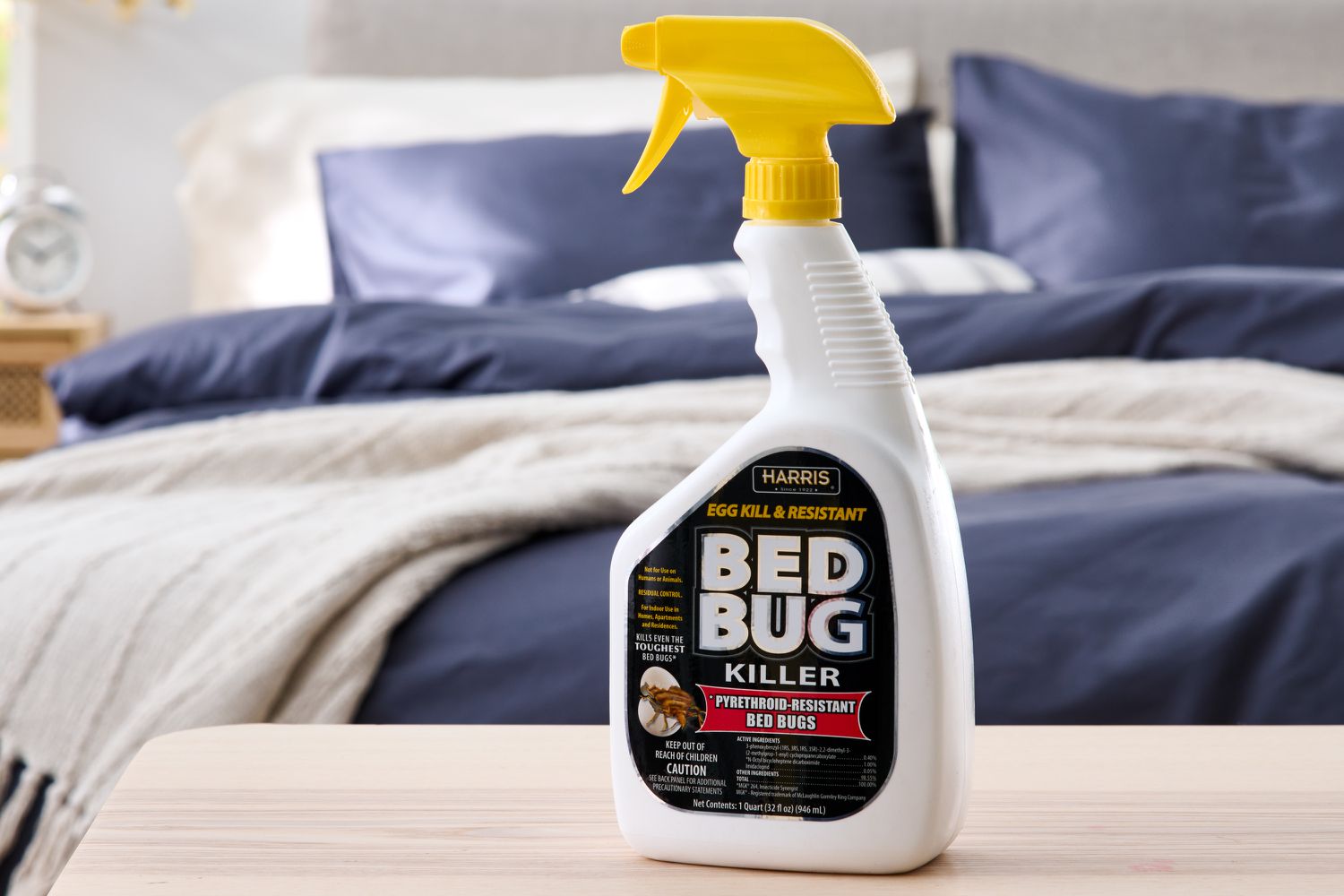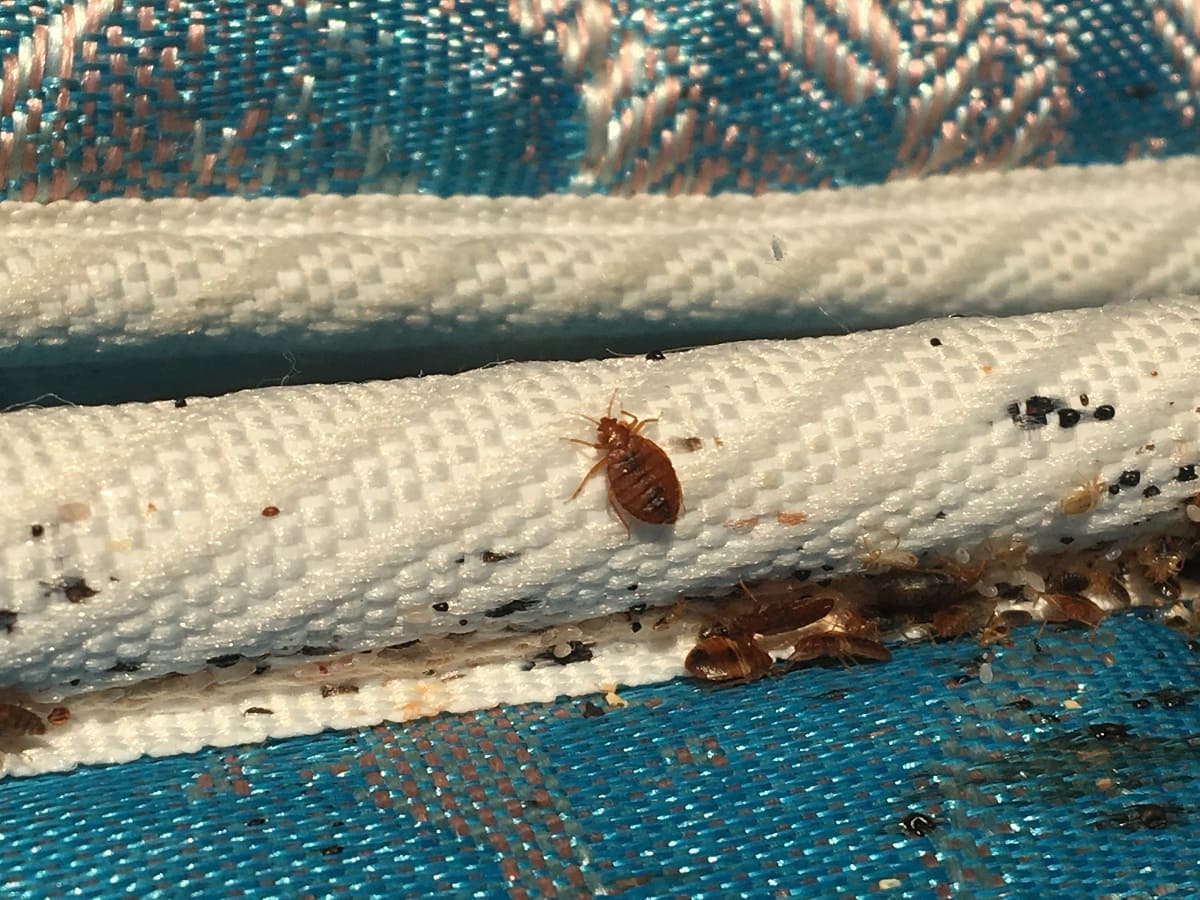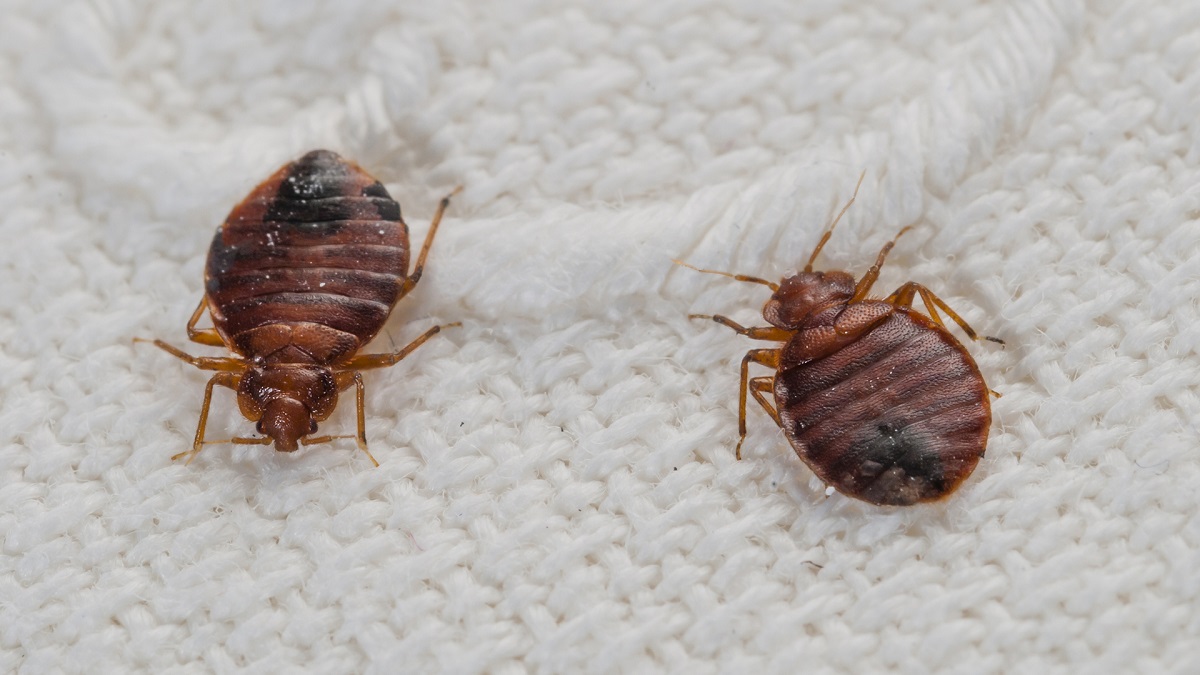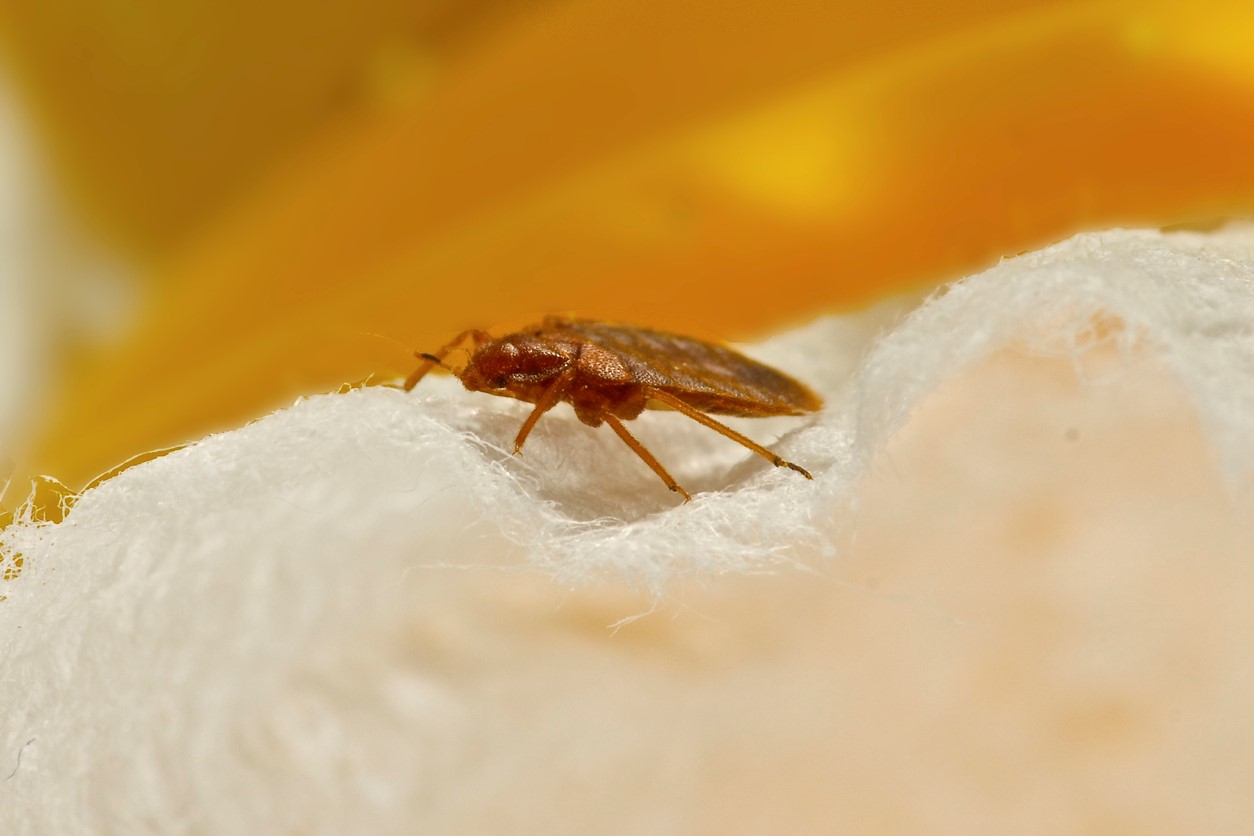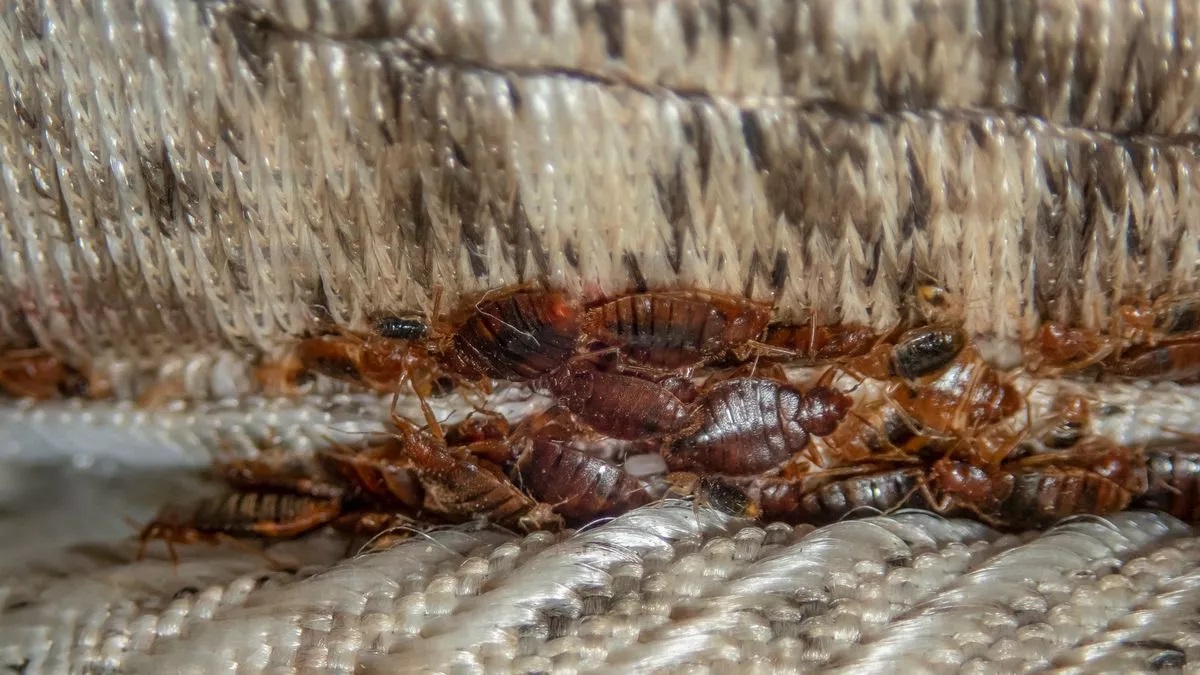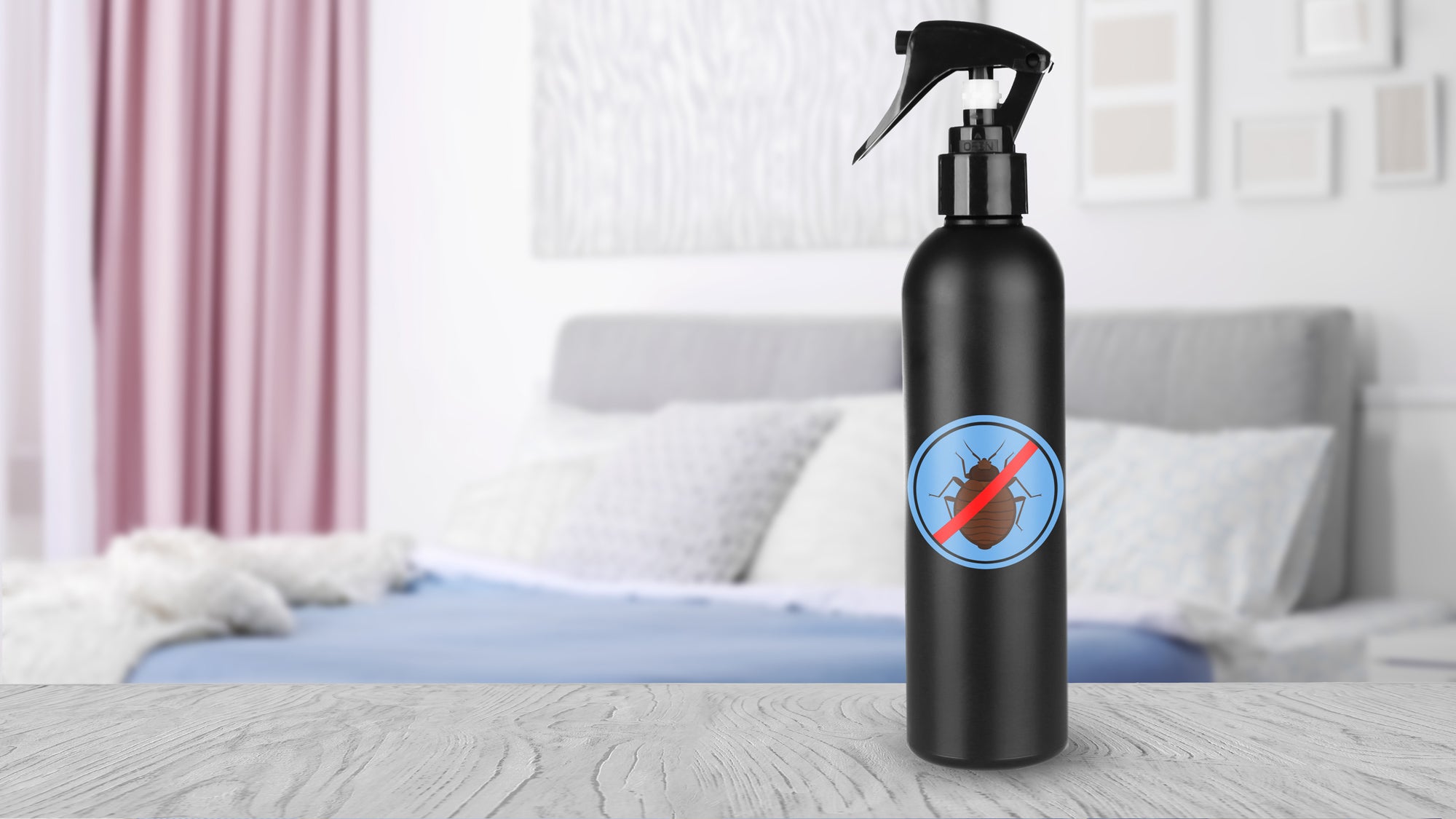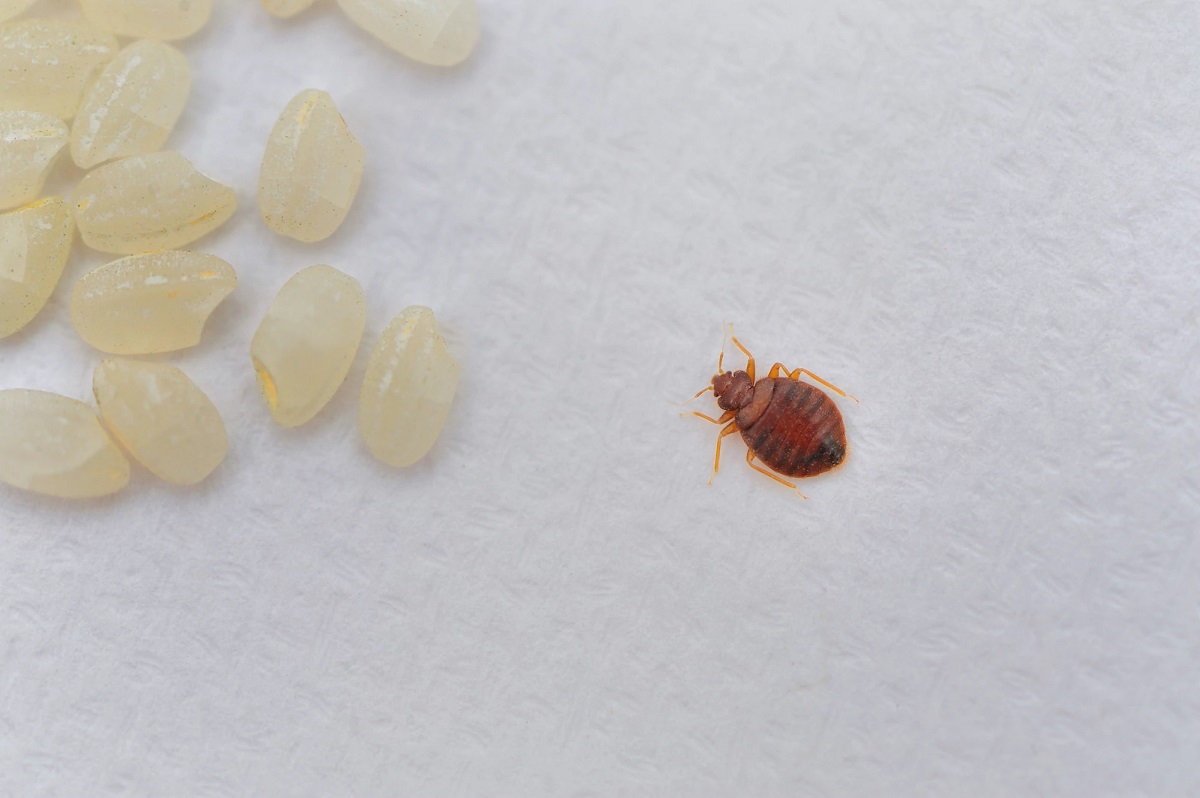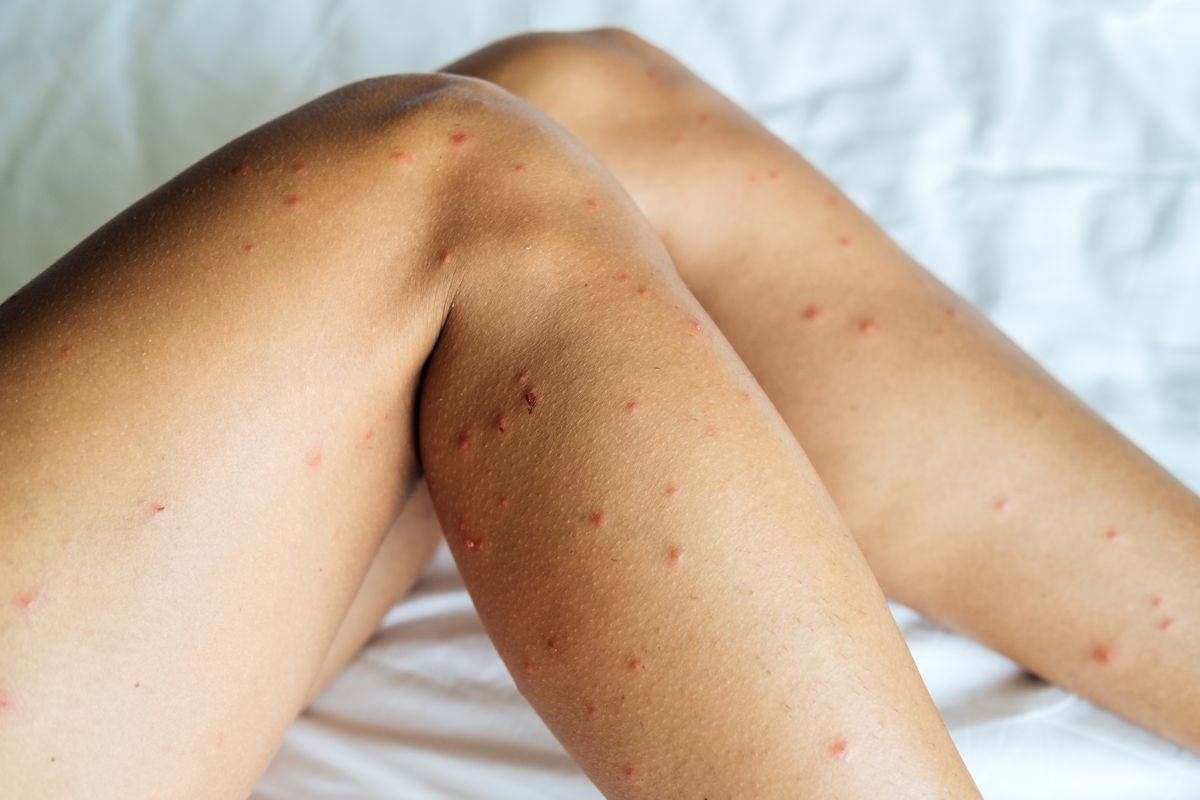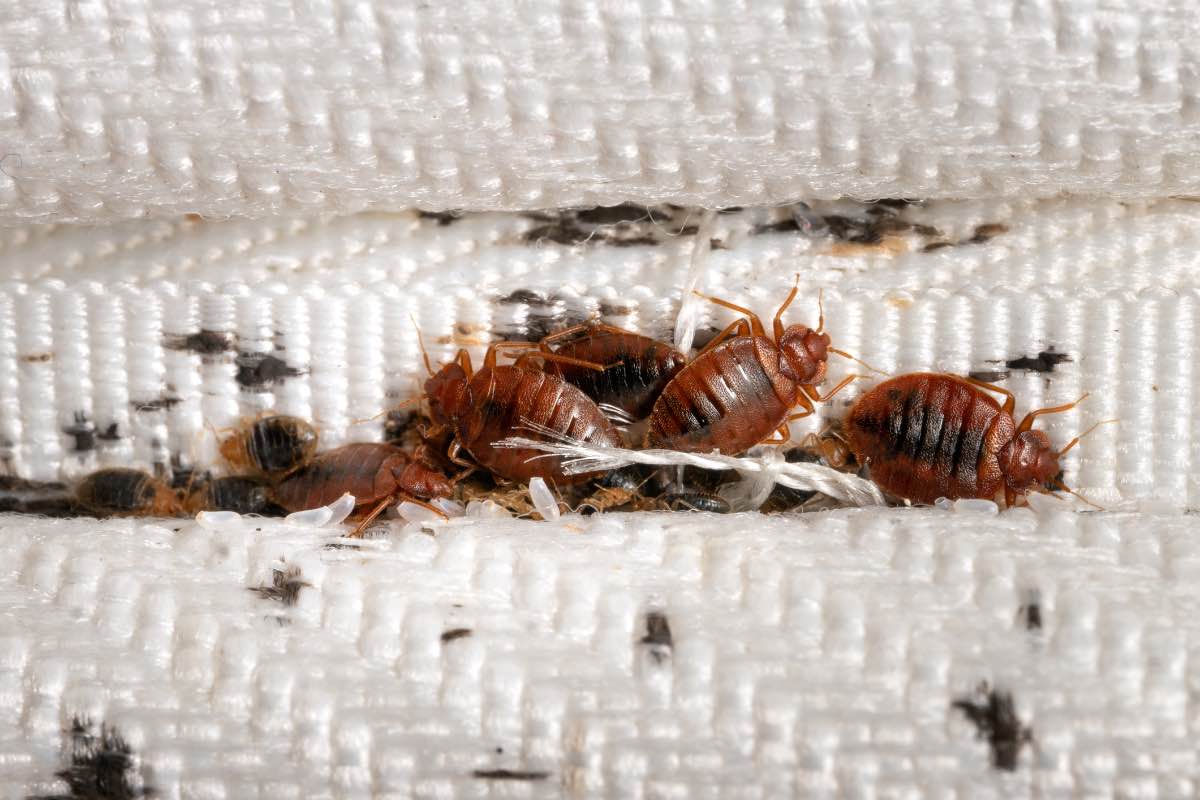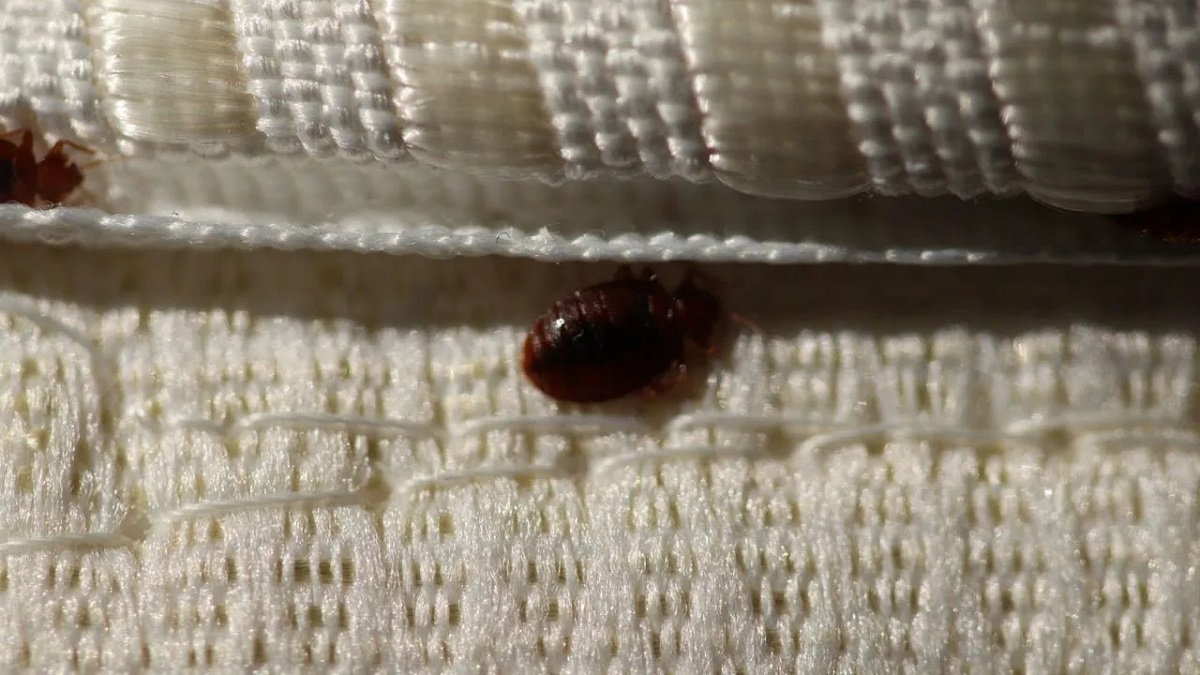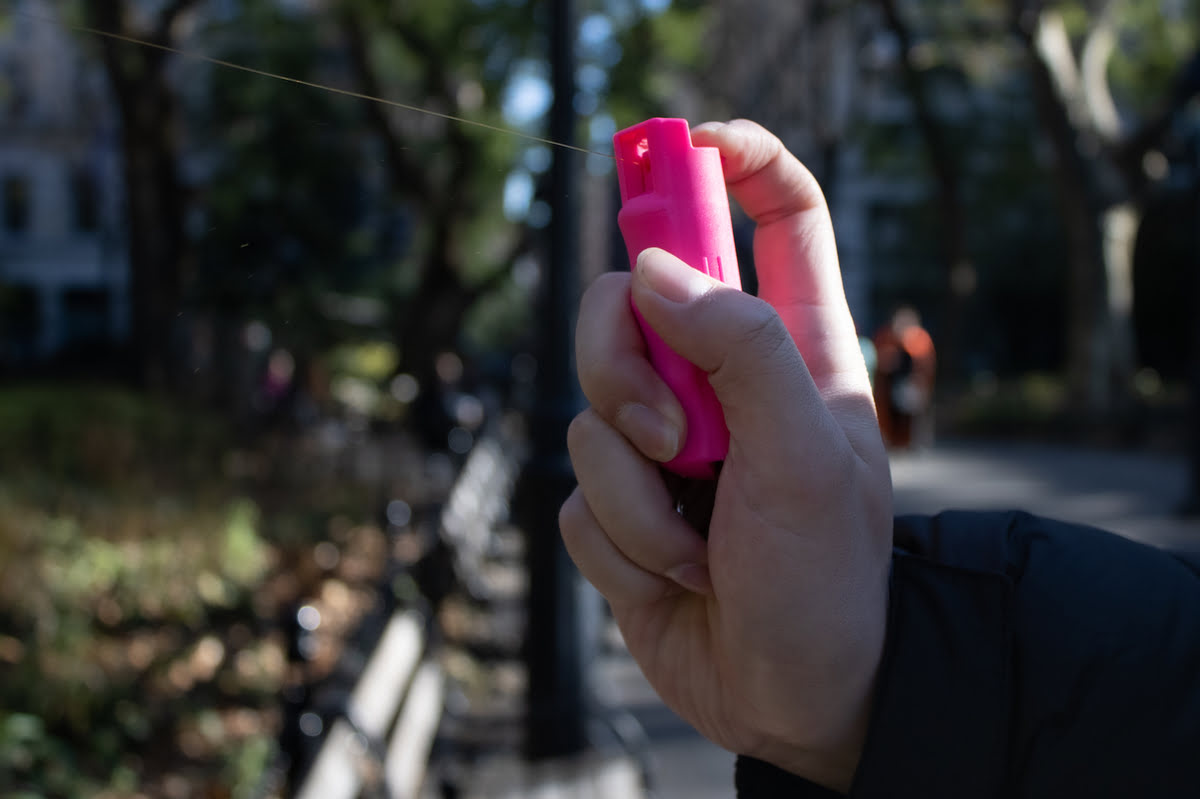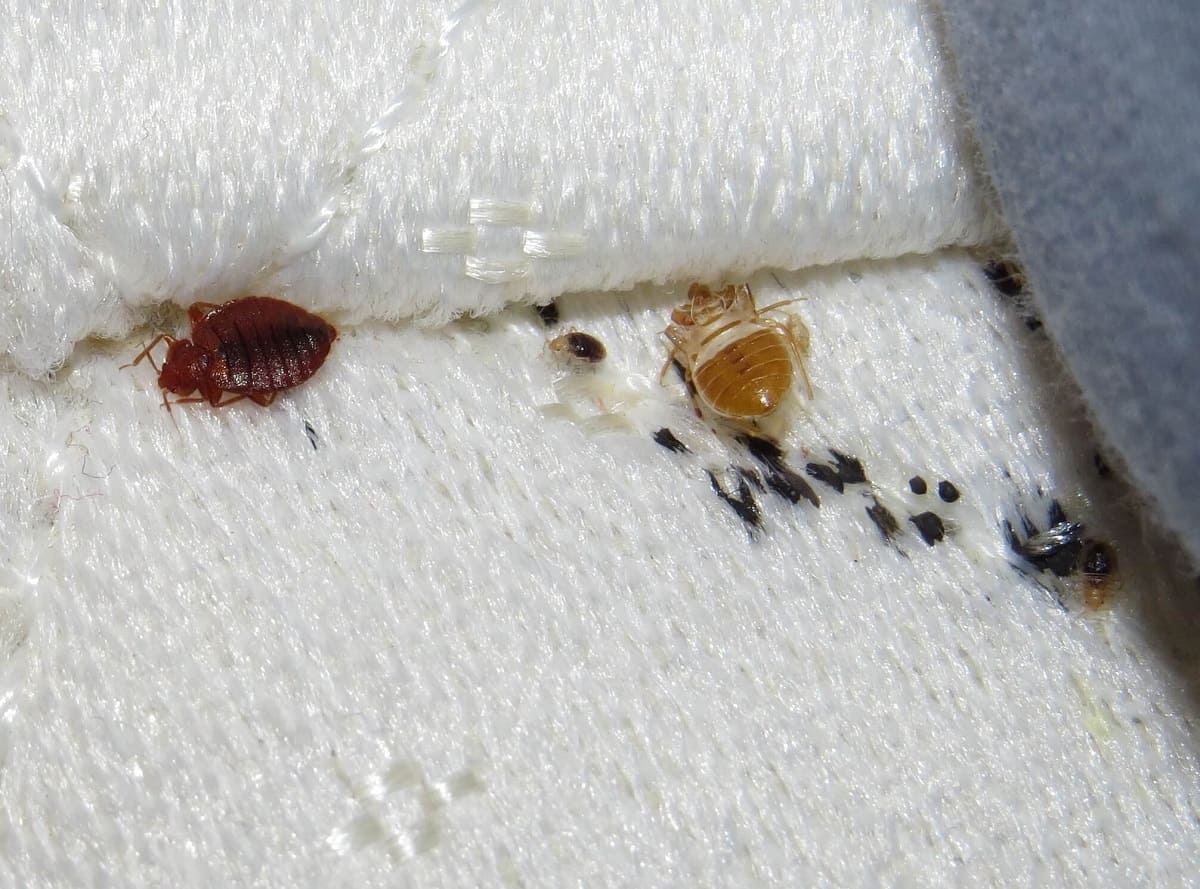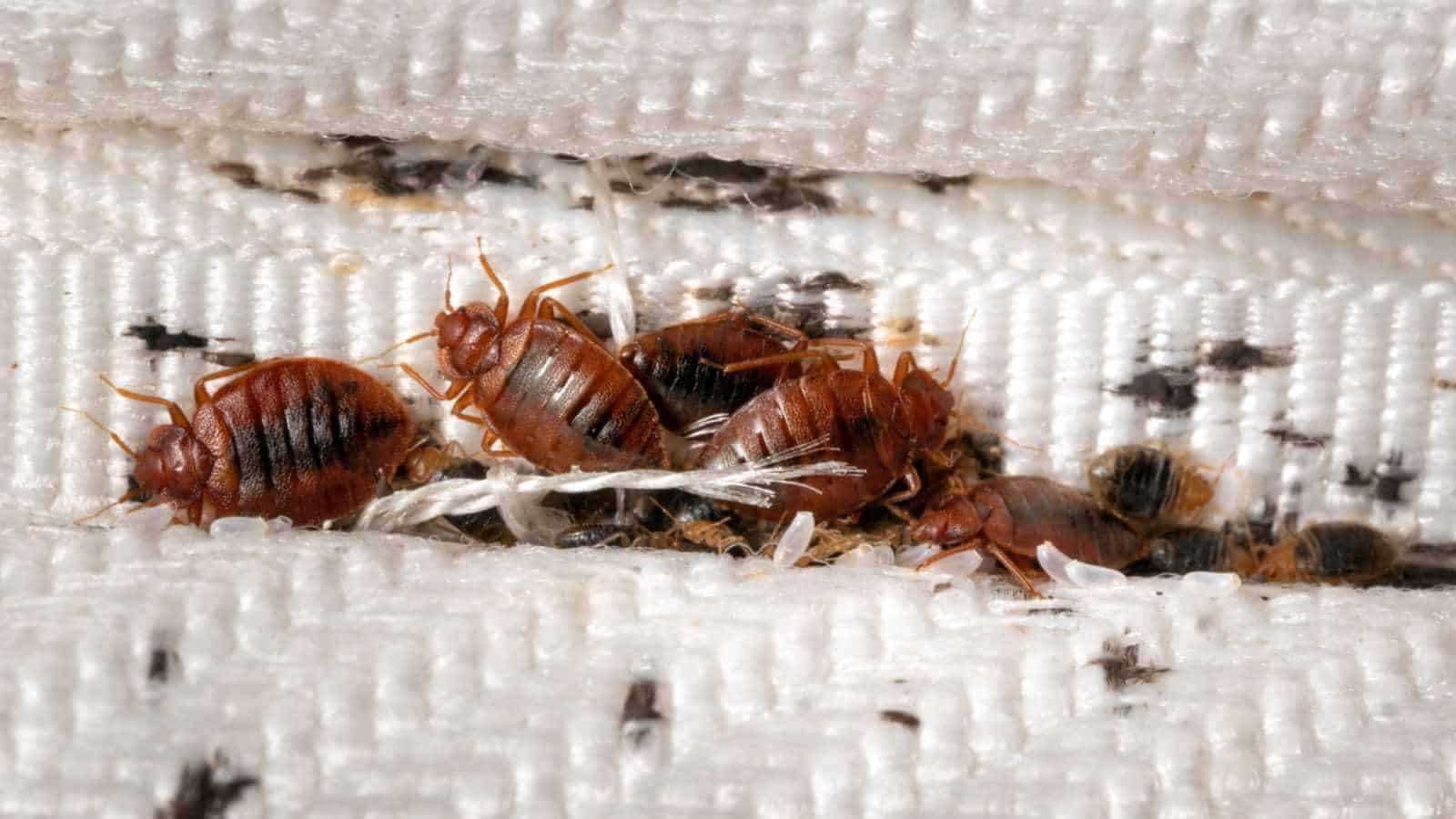Home>Furniture>Bedroom Furniture>What Sprays Are Effective Against Bed Bugs
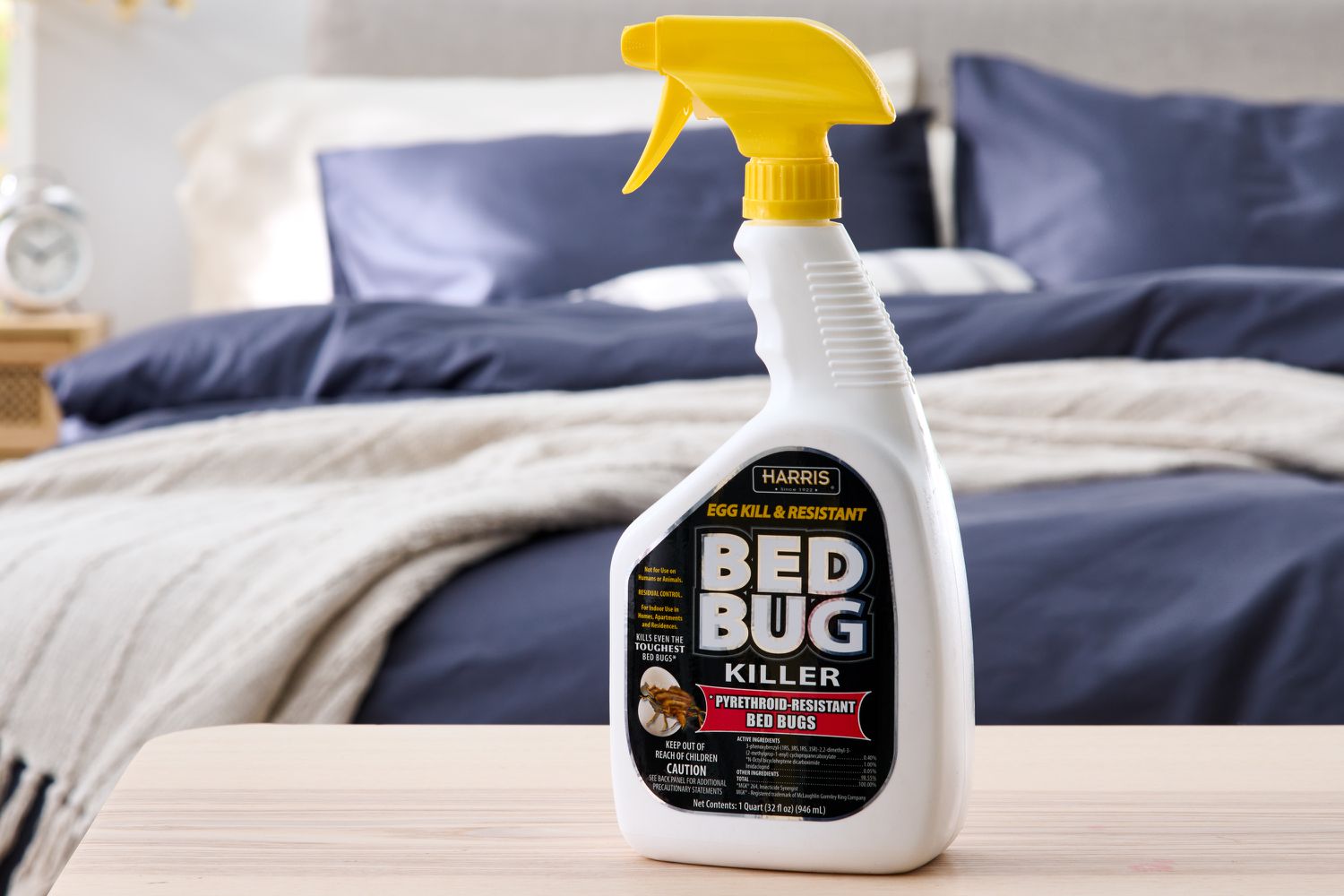

Bedroom Furniture
What Sprays Are Effective Against Bed Bugs
Modified: January 9, 2024
Looking for effective sprays to eliminate bed bugs in your bedroom furniture? Discover the best solutions and tips to get rid of these pests once and for all.
(Many of the links in this article redirect to a specific reviewed product. Your purchase of these products through affiliate links helps to generate commission for Storables.com, at no extra cost. Learn more)
Introduction
Bedrooms are a sanctuary, a place for relaxation and rejuvenation. However, when bed bugs invade, they can turn this haven into a nightmare. These elusive pests are a common problem in households around the world, causing distress and discomfort for countless individuals. If left untreated, bed bug infestations can quickly escalate, resulting in the need for professional pest control services.
Fortunately, there are various methods available to combat these pesky insects. One of the most popular and effective approaches is the use of bed bug sprays. These sprays are designed to kill bed bugs on contact and provide residual protection, preventing re-infestation. In this article, we will delve into the world of bed bug sprays, exploring their effectiveness, different types, and proper application techniques.
Before delving into the details, it’s important to understand the enemy. Bed bugs are small, oval-shaped insects that feed on the blood of humans and animals. Due to their flat bodies and ability to hide in cracks and crevices, they can easily hitchhike into our homes through luggage, used furniture, or even clothing. Once they establish a presence, they multiply rapidly, making it crucial to take swift action to eradicate them.
Now, let’s explore why bed bug sprays are a preferred choice in the battle against these resilient pests. Bed bug sprays offer a quick and convenient solution to eliminate bed bugs and prevent their return. Unlike other methods, such as heat treatment or fumigation, sprays can be easily applied to specific areas, targeting the infestation directly. This allows for precise and localized control, making it easier to treat affected furniture, bedding, and other areas where bed bugs may be hiding.
The effectiveness of bed bug sprays largely depends on the active ingredients they contain. Some sprays work by directly killing the bed bugs on contact, while others provide residual protection, continuing to eliminate the pests even after the initial application. To cater to different preferences and needs, there are natural and organic sprays available, as well as chemical-based options.
In the upcoming sections, we will explore the pros and cons of these common types of bed bug sprays in greater detail, shedding light on their effectiveness and safety measures. Additionally, we will provide guidance on the proper application of these sprays, ensuring maximum efficacy and minimal risk. By understanding these factors, you will be better equipped to take control of your bedroom and bid farewell to these intruders.
Key Takeaways:
- Bed bug sprays offer efficient, targeted, and cost-effective solutions to combat infestations, providing quick relief and residual protection against re-infestation. Proper application and a combination approach enhance their effectiveness.
- Natural and organic bed bug sprays provide environmentally-friendly and safe alternatives, utilizing botanical ingredients to repel or exterminate bed bugs. Chemical-based sprays offer potent, quick-acting solutions with residual effects, requiring proper application and safety precautions.
Understanding Bed Bugs
Before diving into bed bug sprays, it’s crucial to have a basic understanding of these pesky insects. Bed bugs (scientific name: Cimex lectularius) are small, wingless creatures that predominantly feed on the blood of humans and animals. They are reddish-brown in color, with a flat, oval-shaped body that can expand after feeding.
Bed bugs are commonly found in areas where humans gather and spend extended periods of time, such as bedrooms, hotels, dormitories, and hospitals. They are excellent hitchhikers and can infest new environments by latching onto luggage, used furniture, clothing, or even via person-to-person contact.
Although they are often associated with unclean or unsanitary conditions, bed bugs can infest even the cleanest of homes. They are attracted to the carbon dioxide and body heat emitted by sleeping humans, making our beds an ideal feeding ground. Bed bugs typically hide during the day and come out at night to feed, leaving behind itchy, red bite marks on the skin.
Identifying a bed bug infestation can be challenging, as these bugs are experts at hiding in tiny crevices and cracks. However, some signs can indicate their presence, such as dark spots of fecal matter on bedding or nearby furniture, shed exoskeletons, and a distinct musty odor. Additionally, if you wake up with unexplained bites or see small blood stains on your sheets, it may be an indication of a bed bug problem.
Bed bugs can cause more than just physical discomfort. Infestations can lead to significant psychological distress, as the thought of being bitten while asleep can disrupt sleep patterns and create anxiety. Their resilience and ability to reproduce rapidly make them a challenging nuisance to eliminate without professional intervention.
Now that we have a better understanding of these stealthy intruders, let’s explore why the use of bed bug sprays can be an effective solution in combating bed bug infestations.
Why Use Sprays Against Bed Bugs
When it comes to battling bed bugs, using sprays can be an effective and convenient solution. Here are several reasons why spraying is a popular method for treating bed bug infestations:
- Efficiency: Bed bug sprays are designed to kill bed bugs on contact. They contain active ingredients that are toxic to these pests, effectively eliminating them upon contact. This quick-acting nature makes sprays an efficient way to tackle the infestation.
- Targeted Application: Sprays allow for precise and localized control. You can directly target the areas where bed bugs are suspected, such as furniture seams, bed frames, and cracks in walls or baseboards. Unlike other treatment methods, such as heat treatment or fumigation, sprays give you the ability to focus on specific areas affected by the infestation.
- Convenience: Bed bug sprays are readily available in stores or online. They come in various sizes and formulations, allowing you to choose the most suitable option for your needs. With sprays, you have the flexibility to treat your infested areas without the need for professional assistance, making it a convenient solution for homeowners.
- Cost-effective: Treating a bed bug infestation can be expensive, especially if you opt for professional pest control services. Bed bug sprays offer a cost-effective alternative, allowing you to tackle the problem yourself. By investing in a high-quality spray, you can save money while still effectively eliminating bed bugs.
- Residual Protection: Many bed bug sprays provide residual protection, meaning they continue to be effective even after the initial application. These sprays create a barrier that prevents bed bugs from re-infesting treated areas. This added layer of defense can help keep your home bed bug-free for an extended period.
It is important to note that while bed bug sprays can be highly effective, they should be used as part of a comprehensive treatment plan. In severe infestations, professional pest control services may be necessary to completely eradicate the problem. Additionally, preventative measures, such as regular cleaning, vacuuming, and sealing cracks and crevices, should be implemented to minimize the risk of future infestations.
Now that we understand the benefits of using bed bug sprays, let’s explore the effectiveness of these sprays in eliminating bed bugs and preventing their return.
Effectiveness of Sprays Against Bed Bugs
When it comes to eliminating bed bugs, the effectiveness of sprays largely depends on the active ingredients they contain and the proper application techniques used. Here are some factors that contribute to the overall effectiveness of sprays against these stubborn pests:
- Active Ingredients: Bed bug sprays typically contain chemicals that are toxic to bed bugs. Common active ingredients include pyrethroids, such as deltamethrin or permethrin, which are synthetic versions of natural insecticides derived from chrysanthemum flowers. These chemicals disrupt the nervous system of bed bugs, leading to paralysis and eventual death. It’s important to choose a spray that contains effective active ingredients to ensure maximum efficacy.
- Residual Effect: Some bed bug sprays offer a residual effect, meaning they continue to work even after the initial application. These sprays create a barrier that remains active for a certain period, preventing bed bugs from re-infesting treated areas. This can be especially beneficial in preventing future infestations and providing long-lasting protection.
- Proper Application: The effectiveness of bed bug sprays is highly dependent on proper application. It’s important to carefully read and follow the instructions provided by the manufacturer. This includes shaking the bottle well before use, spraying the product directly onto infested areas, and ensuring thorough coverage. Paying attention to details and following the recommended application techniques will enhance the effectiveness of the spray treatment.
- Repeat Treatments: In some cases, a single application may not be sufficient to eliminate an entire bed bug population. Bed bugs have a high reproductive capacity, and their eggs can be resistant to sprays. To ensure complete eradication, it may be necessary to repeat the treatment at regular intervals, following the manufacturer’s instructions. This will help target any surviving bugs or newly hatched nymphs, improving the overall effectiveness of the spray.
- Combination Approach: While sprays can be effective on their own, a combination approach is often recommended for severe infestations. This includes using sprays alongside other methods like vacuuming, steam cleaning, and thorough laundering of infested items. By incorporating multiple treatment techniques, you can increase the chances of successful eradication and prevent bed bugs from becoming resistant to a single method.
It’s important to keep in mind that despite their effectiveness, bed bug sprays may not completely eradicate an infestation on their own. Severe infestations or hidden bed bug populations may require professional pest control services to completely eliminate the problem. Additionally, proper cleanliness and preventive measures should be maintained to minimize the risk of future infestations.
Now that we understand the effectiveness of bed bug sprays, let’s explore the different types of sprays available for combating these persistent pests.
Common Types of Bed Bug Sprays
There are various types of bed bug sprays available, each with its own unique characteristics and advantages. Understanding the different types can help you choose the most suitable option for your specific needs. Here are the common types of bed bug sprays:
- Natural and Organic Sprays: Natural and organic sprays are a popular choice for those who prefer environmentally-friendly options or have concerns about chemical exposure. These sprays typically contain botanical ingredients, such as essential oils, that have shown to repel or kill bed bugs. Common natural ingredients used in these sprays include lavender, peppermint, tea tree oil, and cedar oil. While natural sprays can be effective, their residual effect may not be as long-lasting as chemical-based sprays.
- Chemical-based Sprays: Chemical-based sprays are formulated with synthetic insecticides that are highly effective at killing bed bugs. These sprays often contain active ingredients such as pyrethroids (e.g., deltamethrin or permethrin) or pyrethrin, which are derived from chrysanthemum flowers. Chemical-based sprays come in various formulations, including aerosols, pump sprays, and ready-to-use liquids. Due to their potency, it’s crucial to follow the instructions provided and apply them correctly, ensuring the safety of occupants and pets.
- Residual Sprays: Residual sprays are designed to provide long-lasting protection by creating a barrier on surfaces. These sprays contain ingredients that remain active for an extended period, continuing to kill bed bugs even after the initial application. Residual sprays are particularly effective in preventing re-infestation and controlling bed bug populations over time. They are commonly available in both natural and chemical-based formulations.
- Contact Kill Sprays: Contact kill sprays are formulated to eliminate bed bugs upon contact. These sprays contain fast-acting ingredients that kill bed bugs on the spot. They are typically used for direct treatment of bed bugs that are visible or in open areas. Contact kill sprays can be effective for immediate control of bed bugs but may not have the same residual effect as other types of sprays.
It’s important to carefully assess your specific situation and preferences when choosing a bed bug spray. Consider factors such as the severity of the infestation, the presence of children or pets, and any sensitivities or allergies to certain ingredients. Reading reviews and consulting professionals can also provide valuable insights when selecting the most appropriate spray for your needs.
Now that we have explored the common types of bed bug sprays, let’s learn how to properly apply these sprays for maximum effectiveness.
When choosing a spray to use against bed bugs, look for products that contain ingredients like pyrethroids, neonicotinoids, or desiccants, as these have been found to be effective in killing bed bugs. Always follow the instructions on the product label for best results.
Read also: 8 Unbelievable Bed Bug Spray for 2024
Natural and Organic Bed Bug Sprays
Natural and organic bed bug sprays have gained popularity among individuals who prefer environmentally-friendly options or have concerns about chemical exposure. These sprays utilize botanical ingredients, such as essential oils, to repel or exterminate bed bugs. While they may not be as potent as chemical-based sprays, natural and organic options can still offer effective results. Let’s explore the benefits and considerations of using natural and organic bed bug sprays:
- Environmentally-Friendly: One of the main advantages of natural and organic sprays is their eco-friendly nature. They typically contain ingredients derived from plants, such as lavender, peppermint, tea tree oil, and cedar oil. These botanical extracts are considered safe for the environment and pose minimal risks to humans and pets.
- Reduced Chemical Exposure: By opting for natural and organic sprays, you can minimize your exposure to synthetic chemicals. This is especially beneficial for individuals with sensitivities or allergies to chemical-based products. It also provides peace of mind for those who prefer to avoid harsh chemical treatments in their living spaces.
- Pleasant Aromas: Natural and organic sprays often have pleasant scents due to the essential oils used in their formulation. The aromatic properties of these sprays can create a more pleasant atmosphere in your home, helping to mask any lingering odors associated with bed bug infestations.
- Repellent Action: Some natural ingredients used in bed bug sprays, such as lavender and peppermint, are known for their repellent properties. While they may not exterminate bed bugs, these ingredients can act as a deterrent, making treated areas less attractive to these pests. This can be particularly useful for preventing bed bugs from spreading to other areas or items in your home.
- Considerations: While natural and organic sprays offer advantages, there are a few considerations to keep in mind. First, the effectiveness of these sprays may vary and may not be as potent as chemical-based options. It’s important to follow the instructions provided and repeat the application as necessary. Additionally, some individuals may experience skin irritation or allergies to certain plant-derived ingredients, so patch testing is recommended before widespread application.
When using natural and organic bed bug sprays, it’s important to note that their residual effects may not be as long-lasting as chemical-based sprays. As a result, you may need to reapply these sprays more frequently to maintain their effectiveness.
Remember, natural and organic bed bug sprays are just one tool in the battle against these stubborn pests. It’s important to apply a comprehensive approach that includes other methods, such as vacuuming, steam cleaning, and proper laundering of infested items. Maintaining cleanliness and periodic inspections can help prevent future infestations.
Now that we understand the benefits and considerations of natural and organic bed bug sprays, let’s explore the world of chemical-based sprays commonly used to combat these persistent pests.
Chemical-based Bed Bug Sprays
Chemical-based bed bug sprays are a popular choice for effectively exterminating bed bugs. These sprays contain synthetic insecticides that are specifically formulated to target and eliminate these pests. While chemical-based sprays may have a more potent impact than natural alternatives, they also come with some considerations. Let’s explore the benefits and considerations of using chemical-based bed bug sprays:
- Highly Effective: Chemical-based sprays are specifically designed to kill bed bugs on contact. They contain active ingredients such as pyrethroids (e.g., deltamethrin or permethrin) or pyrethrin, which are derived from chrysanthemum flowers. These ingredients disrupt the nervous system of bed bugs, leading to their paralysis and eventual demise. The potent nature of these chemicals makes them highly effective in eliminating bed bug infestations.
- Quick Knockdown: Chemical-based sprays offer a quick knockdown effect, meaning they rapidly kill bed bugs upon contact. This can provide immediate relief and help control the infestation more efficiently. It’s important to note that while these sprays can kill adult bed bugs, they may not be as effective against eggs or nymphs, which can be more resistant.
- Residual Protection: Many chemical-based bed bug sprays offer residual protection. This means that even after the initial application has dried, the spray continues to be effective for an extended period. The residual effect provides ongoing control and prevents bed bugs from re-infesting treated areas. This is particularly advantageous in preventing future infestations and achieving long-term results.
- Multiple Formulations: Chemical-based sprays are available in various formulations, including aerosols, pump sprays, and ready-to-use liquids. These options allow for convenient and targeted application, ensuring adequate coverage of affected areas. However, it’s important to carefully read and follow the instructions provided by the manufacturer to ensure safe and effective usage.
- Considerations: While chemical-based sprays offer potent eradication of bed bugs, there are a few considerations to keep in mind. First, some individuals may be sensitive to the synthetic chemicals used in these sprays, so it’s important to take necessary precautions such as wearing protective gloves and ensuring proper ventilation during application. Additionally, bed bugs can develop resistance to certain insecticides over time, so it’s advisable to rotate different products or use them in combination with other treatment methods for optimal effectiveness.
When using chemical-based bed bug sprays, it’s crucial to carefully read and follow the instructions provided by the manufacturer. This includes shaking the bottle well before use, ensuring proper dilution if necessary, and applying the spray directly to infested areas. Thoroughness and proper application techniques are essential for achieving the best results.
Remember, chemical-based bed bug sprays are just one component of a comprehensive treatment plan. It’s important to combine their usage with other methods like vacuuming, steam cleaning, and laundering of infested items to achieve optimal results. Thoroughness, consistency, and adherence to safety precautions will contribute to a successful bed bug eradication process.
Now that we have explored the benefits and considerations of chemical-based bed bug sprays, let’s move on to learning how to properly apply these sprays for maximum effectiveness.
Proper Application of Bed Bug Sprays
Proper application of bed bug sprays is essential to maximize their effectiveness and ensure successful elimination of the infestation. Whether you’re using natural or chemical-based sprays, following these guidelines will help you achieve the best results:
- Read and Follow Instructions: Before using any bed bug spray, carefully read and follow the instructions provided by the manufacturer. This includes information on proper usage, safety precautions, recommended dosage, and any specific application techniques.
- Prepare the Area: Begin by preparing the affected area. Remove clutter, bedding, and other items to create easy access for treatment. Vacuum the area thoroughly to remove any visible bed bugs, eggs, or debris. Seal and dispose of the vacuum bag or clean the vacuum canister afterward to prevent re-infestation.
- Shake the Spray: Shake the bed bug spray well before use to ensure proper mixing of the active ingredients. This ensures uniform distribution and consistent effectiveness of the spray.
- Target Infested Areas: Directly spray the affected areas, focusing on locations where bed bugs are likely to hide, such as mattress seams, cracks in furniture, baseboards, and other crevices. Ensure thorough coverage and saturation of the surfaces. Pay attention to areas where bed bug activity has been observed or suspected.
- Follow Recommended Application Techniques: Different sprays may have specific application techniques, such as holding the bottle at a certain distance from the surface or using a sweeping motion to cover larger areas. Following these guidelines will help ensure proper distribution and effectiveness.
- Allow Drying Time: After application, allow the spray to dry completely before re-entry into the treated area. This ensures that the active ingredients have enough time to work and minimizes contact with humans and pets.
- Repeat as Necessary: Depending on the severity of the infestation and the type of spray used, it may be necessary to repeat the treatment. Follow the recommended reapplication intervals provided by the manufacturer. This helps target any surviving bed bugs, newly hatched nymphs, or eggs that were unaffected by the initial treatment.
- Take Precautions: During application, take necessary safety precautions, such as wearing gloves, a mask, and protective clothing. Ensure proper ventilation in the area to avoid inhaling fumes. If using chemical-based sprays, keep children and pets away from the treated areas until the spray has dried completely.
It’s important to note that bed bug sprays should not be the sole method of treatment. It’s crucial to combine their usage with other techniques, such as vacuuming, steam cleaning, laundering bedding and clothing, and sealing cracks and crevices, to achieve optimal results. Maintaining cleanliness and implementing preventive measures will help prevent future infestations.
By following these proper application techniques and integrating sprays into a comprehensive approach, you can effectively combat bed bug infestations and regain control of your living space.
Now that we have explored the proper application of bed bug sprays, let’s discuss some precautions and safety measures to ensure the well-being of occupants and pets.
Precautions and Safety Measures
When it comes to using bed bug sprays, it is important to take certain precautions and safety measures to protect yourself, your family members, and your pets. By following these guidelines, you can effectively use bed bug sprays while minimizing potential risks:
- Read the Label: Carefully read and follow the instructions provided on the label of the bed bug spray. These instructions include important guidelines on proper usage, recommended dosage, application techniques, and safety precautions.
- Protective Gear: Wear protective gear when applying bed bug sprays, including gloves, a mask, and, if necessary, goggles. This protects your skin from direct contact with the spray and reduces the risk of inhaling any fumes or particles.
- Ventilation: Ensure proper ventilation in the area being treated. Open windows and doors, and use fans to circulate fresh air. This helps to minimize exposure to any potentially harmful fumes and allows for better air circulation during and after the application.
- Keep Children and Pets Away: During and immediately after the application, keep children and pets away from the treated area. This will prevent accidental contact with the spray and minimize the risk of ingestion or other adverse effects. Once the spray has dried completely, it is generally safe for children and pets to re-enter the area, but it is best to check the specific instructions provided by the manufacturer.
- Avoid Excessive Use: Follow the recommended dosage and avoid using excessive amounts of the bed bug spray. Using more spray than necessary does not enhance its effectiveness and may increase the risk of adverse effects.
- Storage and Disposal: Store the bed bug spray in a cool, dry place, out of the reach of children and pets. Ensure that the spray is tightly sealed to prevent any accidental leaks or spills. When disposing of empty spray bottles or unused products, follow the instructions provided by the manufacturer or consult local waste disposal guidelines.
- Consult Professionals: In severe cases of bed bug infestations or if you have concerns about using bed bug sprays on your own, it is advisable to consult professional pest control services. They have the necessary expertise and resources to effectively treat the infestation while minimizing risks to occupants and pets.
Following these precautions and safety measures will help ensure the proper and safe usage of bed bug sprays. Remember, if you have any specific health concerns or allergies, it is always best to consult a healthcare professional before using any pesticide product.
Now that we have covered the precautions and safety measures, let’s conclude our exploration of bed bug sprays.
Read more: What Are Bed Bugs
Conclusion
Bed bug infestations can be a source of immense frustration and discomfort, turning our sanctuaries into sleepless and stressful environments. However, with the right approach, these resilient pests can be effectively eradicated. Bed bug sprays have proven to be a popular and convenient solution for tackling these infestations.
Throughout this article, we have explored the world of bed bug sprays, their effectiveness, and the different types available. Natural and organic sprays provide an environmentally-friendly option, utilizing botanical ingredients to repel or exterminate bed bugs. Chemical-based sprays, on the other hand, offer potent and quick-acting solutions with residual effects that help prevent re-infestation.
Proper application techniques, such as careful reading of instructions, thorough coverage of affected areas, and repeat treatments as necessary, are essential for maximizing the effectiveness of bed bug sprays. It’s important to remember that sprays should be used as part of a comprehensive approach, combined with other methods like vacuuming, steam cleaning, and laundering of infested items, to achieve optimal results.
While using bed bug sprays, it is crucial to take precautions and follow safety measures. Wearing protective gear, ensuring proper ventilation, and keeping children and pets away from treated areas are key practices to minimize risks. Additionally, storing and disposing of bed bug sprays properly is important for the safety of all occupants and the environment.
In some cases, professional pest control services may be necessary, especially for severe infestations or if you have concerns about using sprays on your own. Their expertise and resources can ensure effective treatment while minimizing risks to occupants and pets.
With patience, thoroughness, and adherence to proper usage, bed bug sprays can be a valuable tool in your battle against these persistent pests. By implementing a multi-faceted approach that includes sprays, preventative measures, and regular inspections, you can regain control of your living space and restore peace of mind in your bedroom.
Remember, although bed bugs can be a daunting problem, they are not invincible. With the right knowledge, resources, and perseverance, you can successfully eliminate these unwanted intruders and reclaim the comfort and tranquility of your home.
Frequently Asked Questions about What Sprays Are Effective Against Bed Bugs
Was this page helpful?
At Storables.com, we guarantee accurate and reliable information. Our content, validated by Expert Board Contributors, is crafted following stringent Editorial Policies. We're committed to providing you with well-researched, expert-backed insights for all your informational needs.
